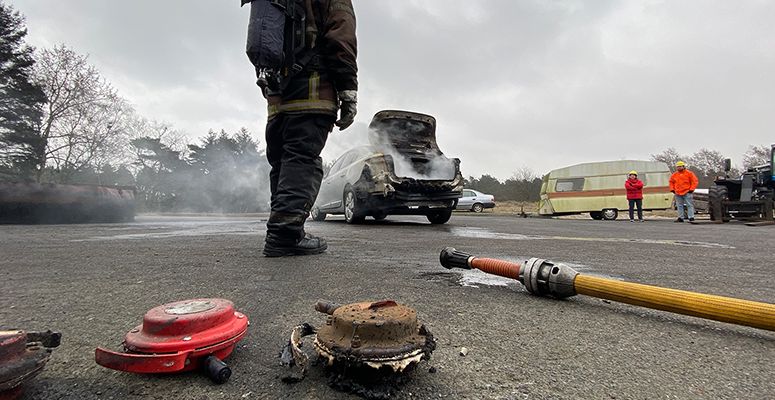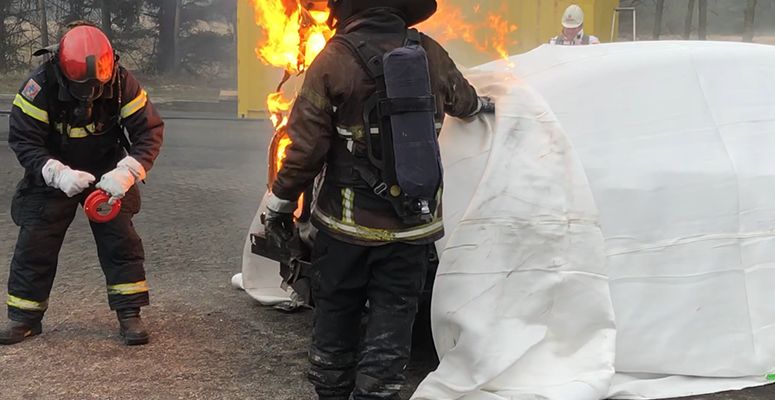Aerosol Units explained

An aerosol unit is a lightweight, hand-held device that can be used during a fire to significantly reduce it. First responders and firefighters use it primarily for class A, B and C fires. It allows them to activate it on scene and throw them into the fire area. The device will then automatically activate and, depending on the volume of the space, help reduce the fire.
How does the aerosol unit work exactly?
The Aerosol unit consists of a body which stores the aerosol forming compound. The active substances of the aerosol unit are solid micro particles (potassium nitrate to be exact) that fill the compartment completely and will stay there for a considerable amount of time. The device works as an anti-catalytic and as a result the energy will be drained from the fire.
In order to activate the device, you have to straighten the far ends of the pins and pull the pin out. When done correctly, you will hear a clicking sound. This means the unit is activated and will start producing aerosol after about 8 seconds.

Within 25 seconds, the unit will be discharged. Please note that the hold time (or time before re-ignition) depends on the leakage and the amount of gr/m3 that is inserted. The average hold time is 30 minutes. Logically, the smaller the volume (in m3) of the space, the longer the hold time.
The bracket on the side of the device will make it easy to hold the aerosol unit and throw it into the fire.
Always make sure to keep a safe distance.

Aerosol units to help control EV car fires
When using our Aerosol units for controlling EV car fires, the device works best when used combined with our Fire Blanket and Water Mist Lance.
Our several live tests have shown us that the use of aerosol units work best in (EV) car fires when thrown under the vehicle, after a Fire blanket has been pulled over it. This way, the active substances of the device will stay under the blanket and go into the burning vehicle.
The Water Mist Lance can help make the Fire blanket wet, making it even harder for the aerosol substances to escape from under the blanket.

Important to know
Although a normal concentration of aerosol particles can be considered as safe for the health, inhalation of the micro sized particles may cause short-term discomfort. Therefore, unnecessary exposure should be avoided.
For first responders:
Upon arrival, inform fire fighters and other concerned parties about the deployment of
the DSPA-5.
For fire fighters:
Possible hot spots can cause re-ignition once the aerosol is ventilated. Use a thermal
imaging camera to identify possible hot spots and extinguish these with a suitable
extinguishing agent.

